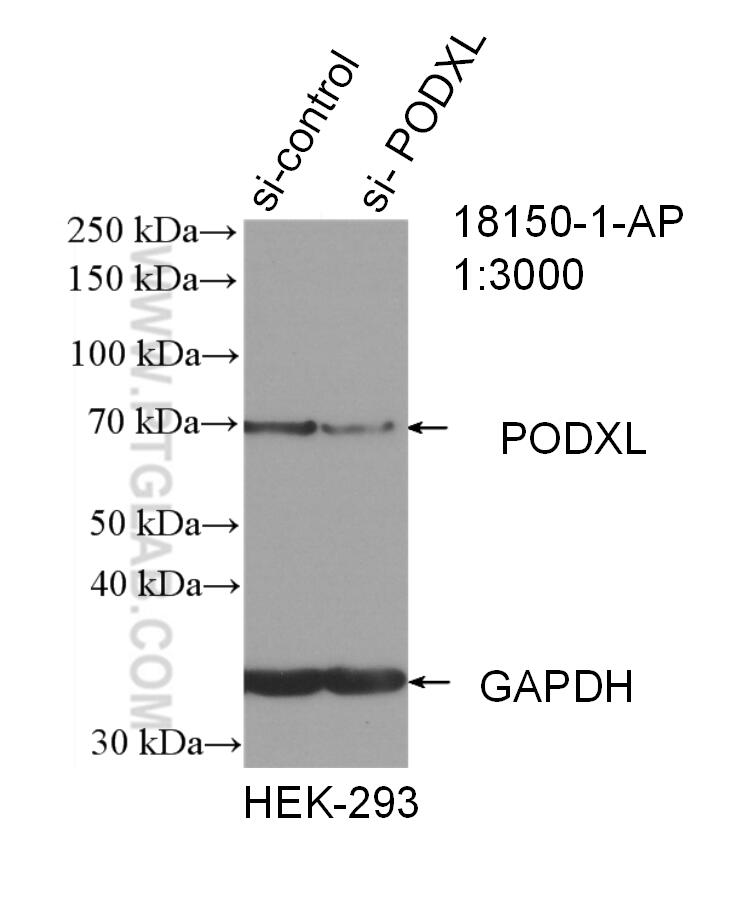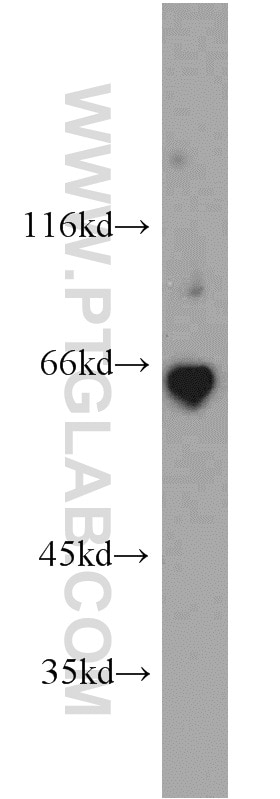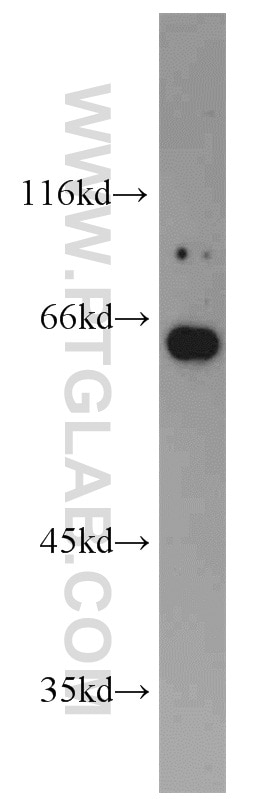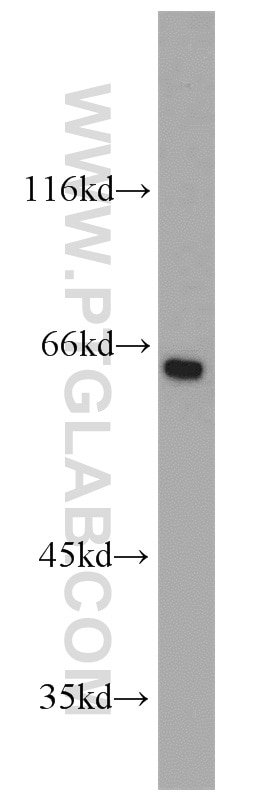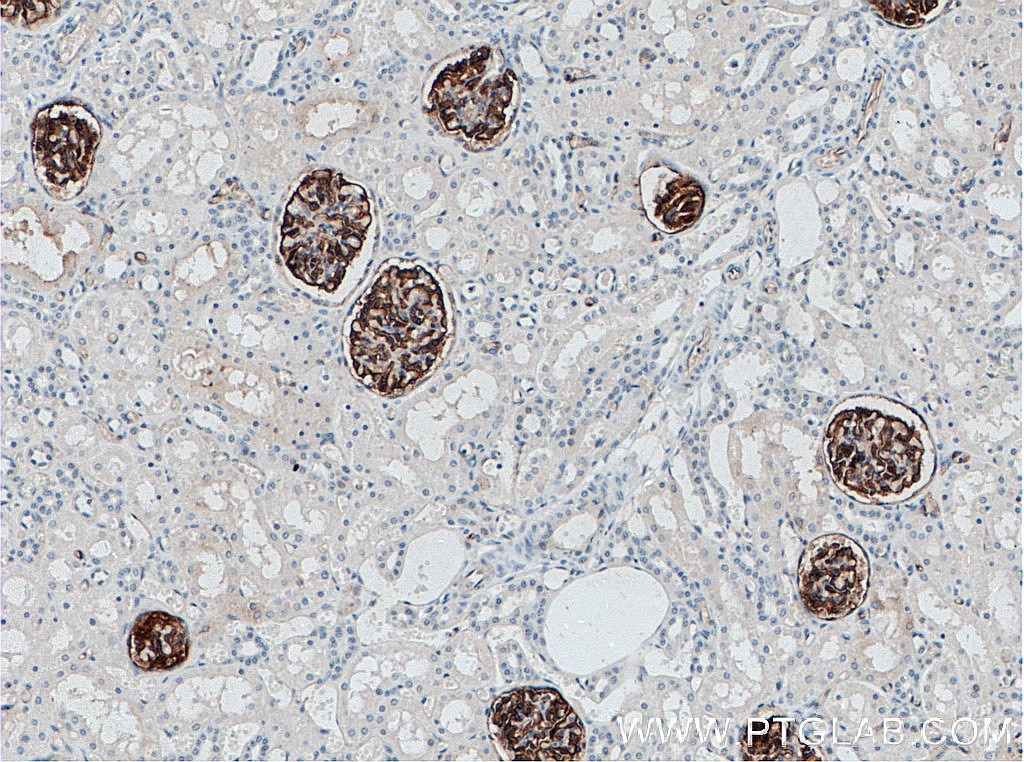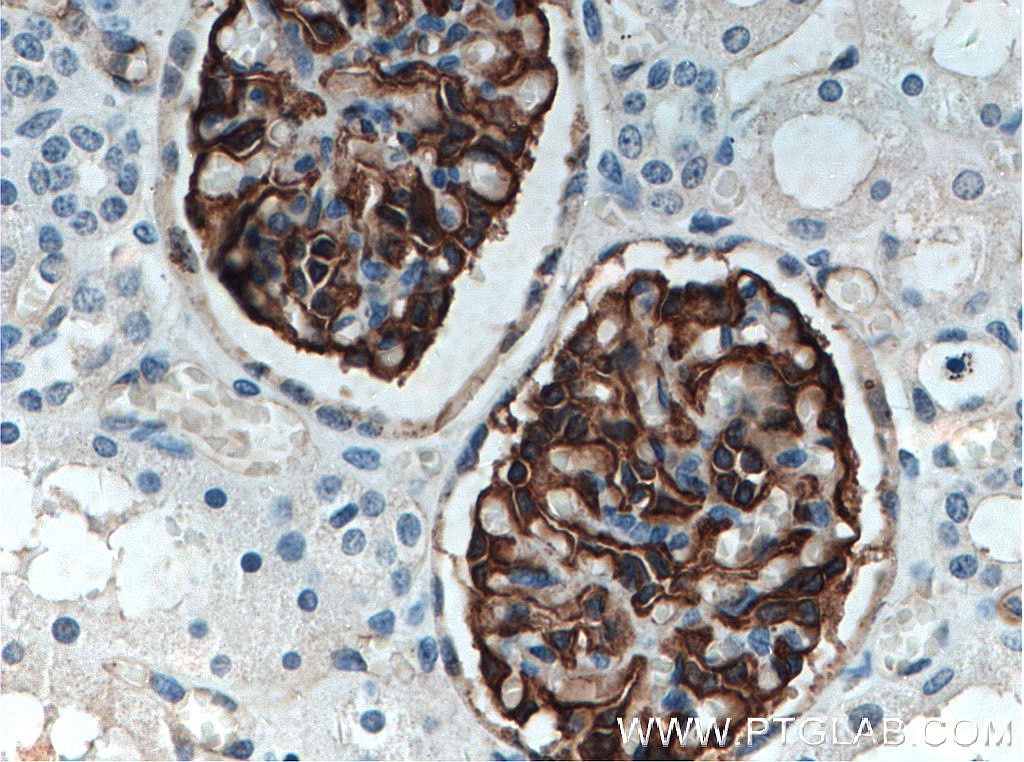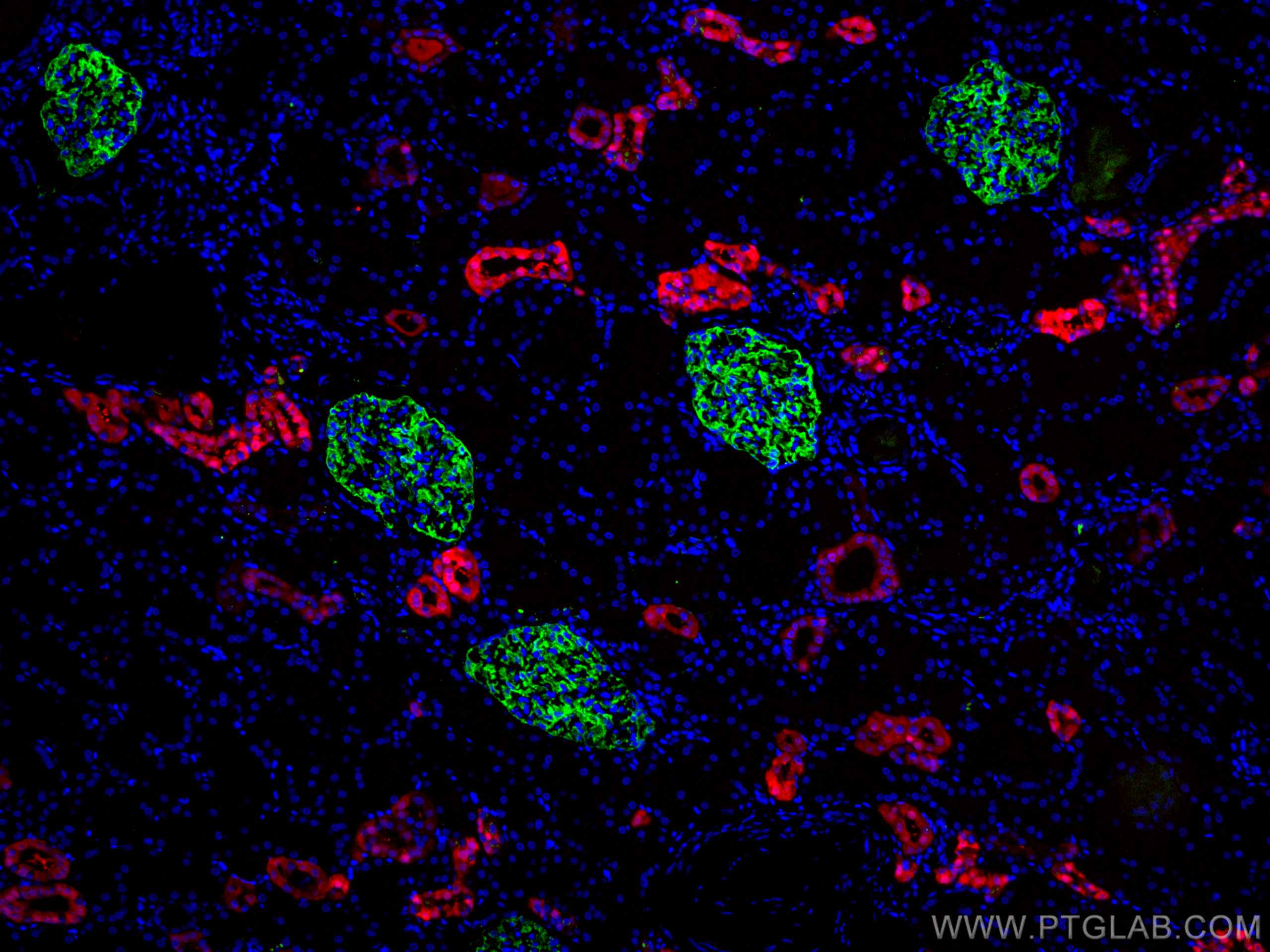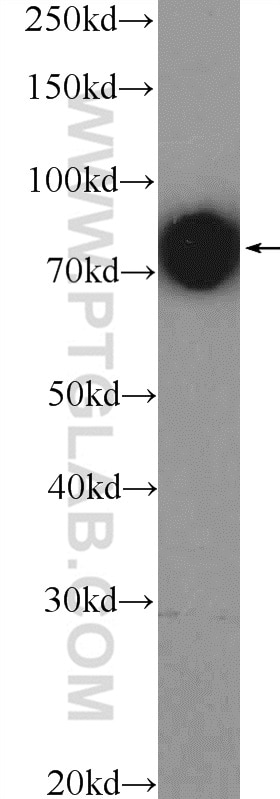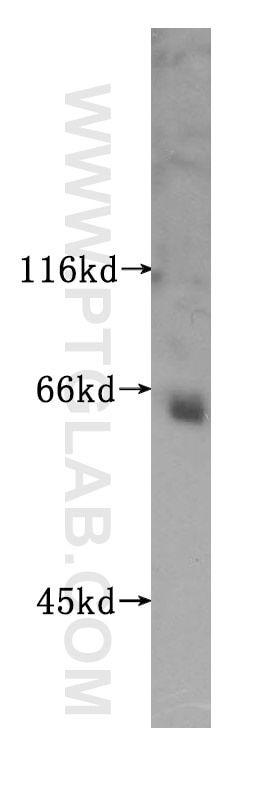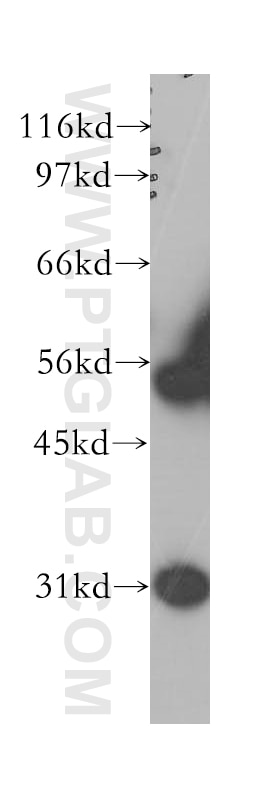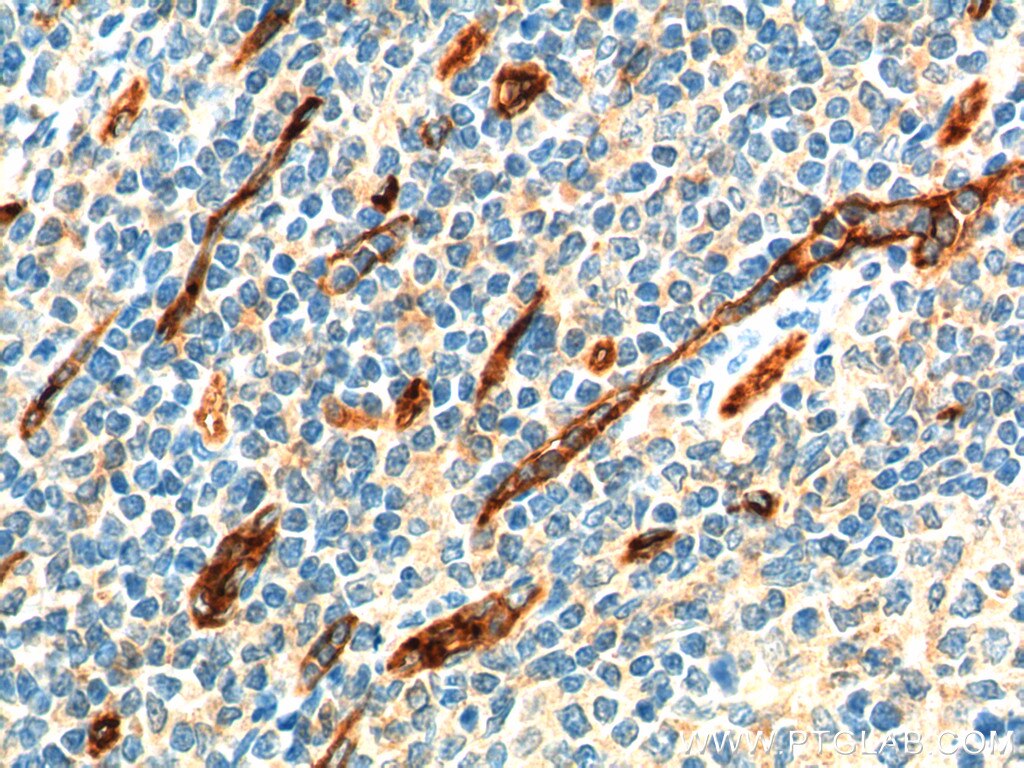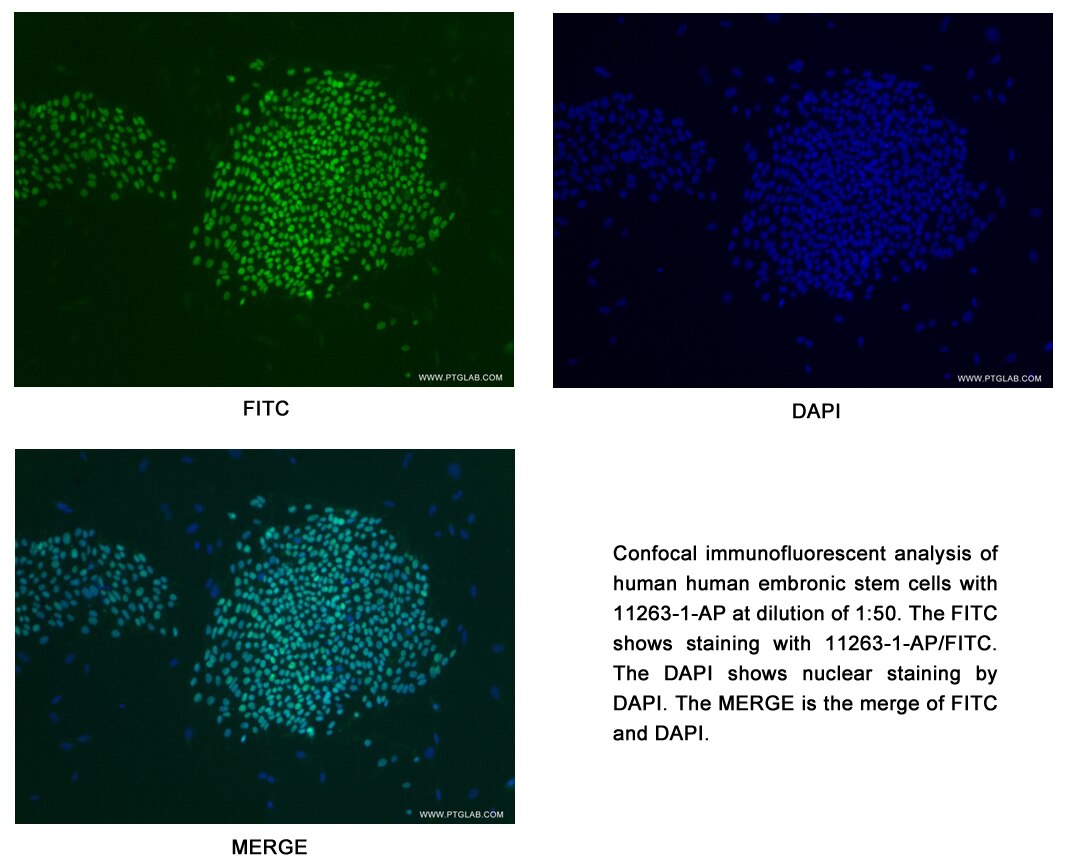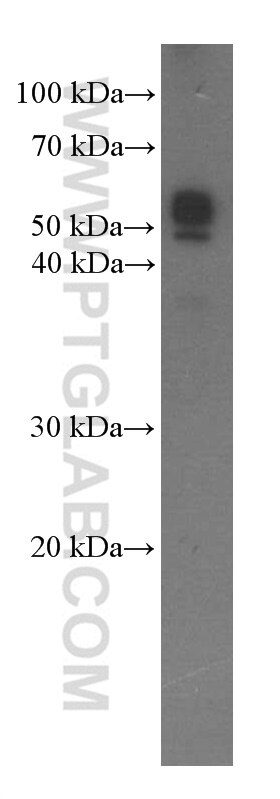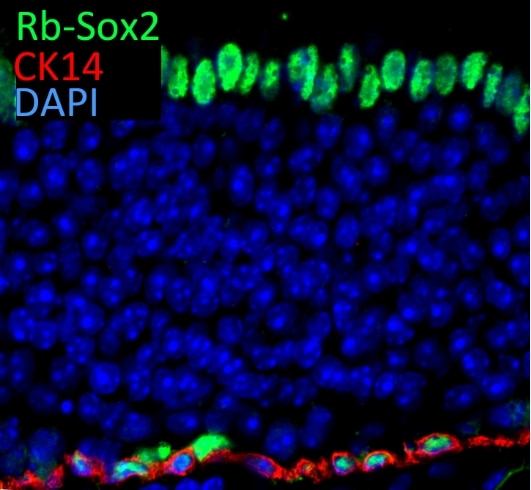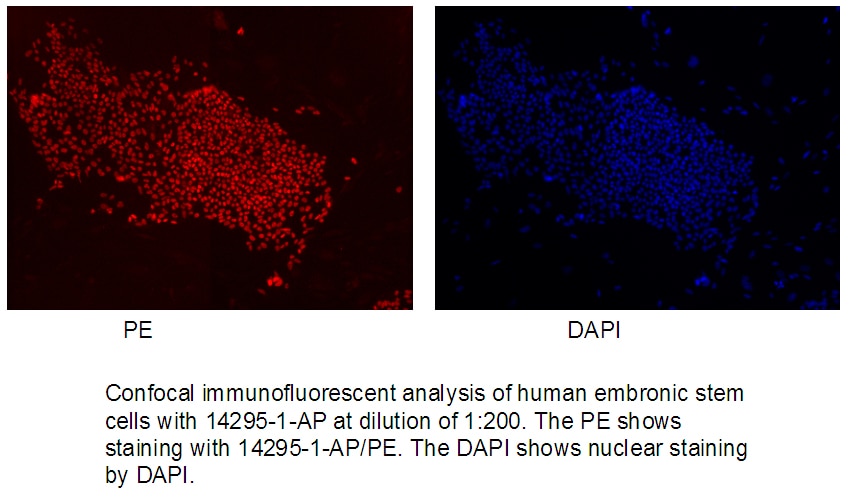- Phare
- Validé par KD/KO
Anticorps Polyclonal de lapin anti-Podocalyxin
Podocalyxin Polyclonal Antibody for WB, IF, IHC, ELISA
Hôte / Isotype
Lapin / IgG
Réactivité testée
Humain
Applications
WB, IHC, IF-P, ELISA
Conjugaison
Non conjugué
N° de cat : 18150-1-AP
Synonymes
Galerie de données de validation
Applications testées
| Résultats positifs en WB | tissu rénal humain, cellules HEK-293, cellules HepG2 |
| Résultats positifs en IHC | tissu rénal humain il est suggéré de démasquer l'antigène avec un tampon de TE buffer pH 9.0; (*) À défaut, 'le démasquage de l'antigène peut être 'effectué avec un tampon citrate pH 6,0. |
| Résultats positifs en IF-P | tissu rénal humain, |
Dilution recommandée
| Application | Dilution |
|---|---|
| Western Blot (WB) | WB : 1:500-1:1000 |
| Immunohistochimie (IHC) | IHC : 1:500-1:4000 |
| Immunofluorescence (IF)-P | IF-P : 1:400-1:1600 |
| It is recommended that this reagent should be titrated in each testing system to obtain optimal results. | |
| Sample-dependent, check data in validation data gallery | |
Applications publiées
| KD/KO | See 1 publications below |
| WB | See 8 publications below |
| IF | See 4 publications below |
| FC | See 1 publications below |
Informations sur le produit
18150-1-AP cible Podocalyxin dans les applications de WB, IHC, IF-P, ELISA et montre une réactivité avec des échantillons Humain
| Réactivité | Humain |
| Réactivité citée | Humain |
| Hôte / Isotype | Lapin / IgG |
| Clonalité | Polyclonal |
| Type | Anticorps |
| Immunogène | Podocalyxin Protéine recombinante Ag12844 |
| Nom complet | podocalyxin-like |
| Masse moléculaire calculée | 526 aa, 55 kDa |
| Poids moléculaire observé | 60-70 kDa |
| Numéro d’acquisition GenBank | BC093730 |
| Symbole du gène | Podocalyxin |
| Identification du gène (NCBI) | 5420 |
| Conjugaison | Non conjugué |
| Forme | Liquide |
| Méthode de purification | Purification par affinité contre l'antigène |
| Tampon de stockage | PBS avec azoture de sodium à 0,02 % et glycérol à 50 % pH 7,3 |
| Conditions de stockage | Stocker à -20°C. Stable pendant un an après l'expédition. L'aliquotage n'est pas nécessaire pour le stockage à -20oC Les 20ul contiennent 0,1% de BSA. |
Informations générales
Podocalyxin, also known as podocalyxin-like protein 1 (PODXL or PCLP1), is a transmembrane glycoprotein belonging to the CD34 family of sialomucins. Podocalyxin was originally identified as the major sialoprotein on podocytes of the kidney glomerulus, but was later found to be expressed on vascular endothelial cells and early hematopoietic progenitors. It Involved in the regulation of both adhesion and cell morphology. In addition, podocalyxin is highly expressed in embryonic stem cells and aberrant expression of podocalyxin has been implicated in a wide range of cancers. Podocalyxin is a protein with a peptide bone of ∼55.5 kDa that undergoes a post‐translational glycosylation, the different molecular mass of podocalyxin indicates the extent and variability of glycosylation patterns (PMID: 17092254).
Protocole
| Product Specific Protocols | |
|---|---|
| WB protocol for Podocalyxin antibody 18150-1-AP | Download protocol |
| IHC protocol for Podocalyxin antibody 18150-1-AP | Download protocol |
| IF protocol for Podocalyxin antibody 18150-1-AP | Download protocol |
| Standard Protocols | |
|---|---|
| Click here to view our Standard Protocols |
Publications
| Species | Application | Title |
|---|---|---|
Kidney Int Quantitative assessment of glomerular basement membrane collagen IV α chains in paraffin sections from patients with focal segmental glomerulosclerosis and Alport gene variants | ||
Tissue Eng Part A Genome engineering of human urine-derived stem cells to express lactoferrin and deoxyribonuclease | ||
Int J Cardiol Brg1 deficiency in vascular endothelial cells blocks neutrophil recruitment and ameliorates cardiac ischemia-reperfusion injury in mice. | ||
Sci Rep Urinary extracellular vesicles and micro-RNA as markers of acute kidney injury after cardiac surgery. |
